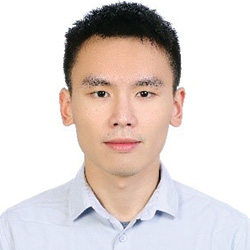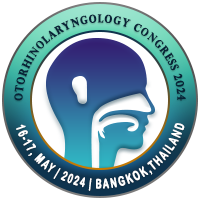
Kao-Tsung Lin
National Taiwan University Hospital, Taipei, TaiwanTitle: Limitation of updated MR images on the vestibular hydrops in Meniere’s disease
Abstract
Objective:
This study adopted the cervical and ocular vestibular-evoked myogenic potential (cVEMP and oVEMP) tests in Meniere’s disease (MD) patients to correlate them with vestibular endolymphatic hydrops (EH) on MR images.
Methods:
A total of 25 patients with unilateral definite MD identified by positive cochlear hydrops on MR images were enrolled. All patients underwent audiometry, cVEMP test and oVEMP test, followed by MR imaging for confirmation.
Results:
A significantly declining sequence of abnormality rates in MD patients was identified from the audiometry (92%), cVEMP test (52%) to the oVEMP test (40%), which was consistent with a significantly decreasing order of prevalence of EH on MR images running from the cochlea (100%), saccule (56%) to the utricle (52%). The cVEMP test for detecting the saccular hydrops revealed a sensitivity of 62%, while the oVEMP test for assessing the utricular hydrops showed a sensitivity of 70%. However, correlating VEMP results with vestibular hydrops did not show any significant relationship. In addition, mean hearing level (MHL) at four frequencies (500, 1000, 2000 and 3000 Hz) of Grade I cochlear hydrops (51±19 dB) did not significantly differ from Grade II cochlear hydrops (53±19 dB).
Conclusion:
Limitations of the updated MR imaging for visualizing the hydrops comprised: 1) failure to correlate vestibular hydrops with VEMP results, and 2) failure to correlate grade of cochlear hydrops with MHL. The reason is probably because updated MR imaging fails to identify distorted contour of the cochlea/utricle/saccule. Further advanced technique using ultrahigh resolution of fine structures in the inner ear compartments is essential to promote a wider use of MR imaging.
Biography
Kao-Tsung Lin is a graduate of National Taiwan University, and is a medical doctor at the department of otolaryngology in National Taiwan University Hospital. His field of interest is neurotology and its recent technological advancement in diagnosis.

